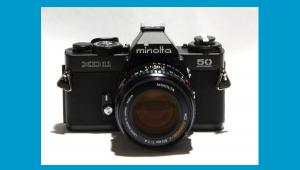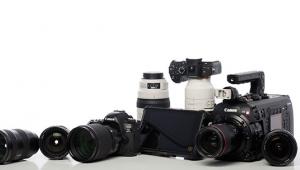An Industry in Transition
True or false?
Well, it’s a difficult question to answer because the foregoing narrative is overly simplistic. There’s no denying that point-and-shoot cameras are steadily losing market share—especially with consumers who view the camera as a lifestyle appliance (rather than a hobbyist or professional tool). And we expect that trend to continue. You always have a phone with you, so if you consider yourself an auto-everything snapshooter there’s very little reason to also carry an inexpensive compact camera that may offer no more (or possibly less) picture-taking capability than an advanced smartphone.
Supporting this equation is the advent of a variety of smartphone accessories, like add-on wide-angle, telephoto, macro and fisheye lenses from Olloclip, Schneider and others.
Where complications arise is when prognosticators paint point-and-shoot cameras and interchangeable-lens mirrorless models with the same broad brush. In fact, they aren’t the same, nor are they targeted at the same consumer. Most folks using a compact camera (or a smartphone) in today’s selfie-generation do so because they really don’t care how a camera works, nor are they much interested in a myriad of options for creative control. In fact, smartphone users tend to rely upon apps—rather than built-in features—if they want to get creative.
The value proposition of mirrorless cameras (and the target consumer) is quite different. With a variety of lens choices, electronic flash units, and numerous built-in options for exposure control and other shooting parameters, these cameras are designed for true photo enthusiasts and even professionals. And if you’ve been paying attention to the products unveiled at recent tradeshows in the U.S. and Japan, you know that mirrorless technology is evolving at a rapid pace, with innovative models introduced by Fujilfilm, Sony, Canon, Samsung, Nikon, Panasonic, Olympus, Ricoh/Pentax and Sigma.
Olympus, in fact, recently dropped out of the DSLR market to focus all of their efforts on the mirrorless camera category.
Interestingly, three years ago some industry “experts” were forecasting a 300 percent year-over-year increase in sales of mirrorless cameras. And not only did these optimistic forecasts fail to materialize, sales have actually declined. But that too is a somewhat simplistic analysis, because while mirrorless cameras have failed to live up their hype in the U.S., in Japan they’ve continued to be a big hit ever since Panasonic launched their G1 model in 2008. Last year, mirrorless cameras represented 36 percent of all interchangeable-lens camera shipment in Japan.
According to market research company IDC, global camera shipments of DSLRs in the 4th quarter of last year fell by 6%, while shipments of mirrorless cameras fell by 22%. Overall, mirrorless cameras accounted for about 23% of all shipments in those two categories.
So what does all this mean for the future? Well, most of us who are serious about photography own more than one camera, and my guess is that a mirrorless model with an array of compact lenses and system accessories will remain an important tool for the foreseeable future—especially for those times we want to travel light without sacrificing versatility and image quality. Time will tell.

















































